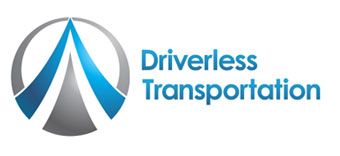Google Self-Driving Car at Fault in Crash With Bus
Jennifer van der Kleut
Google’s self-driving test cars in California have been in 17 accidents over the past six years, but so far, Google believes all of them have helped prove the point behind their invention-that autonomous cars can drive better than humans. How? Because so far, all of the accidents have been the fault of the other car’s human driver.
Unfortunately, that run appears to be over. Countless news outlets including CNBC and WIRED are reporting that on Feb. 14, a Google self-driving car was involved in a collision with a bus, and this time, it appears Google is accepting responsibility for the crash.
According to an accident report filed with the California Department of Motor Vehicles, the Google car was traveling down El Camino Real in Mountain View, the city where its main headquarters is located.
As the car wished to turn right onto Castro Street ahead, the car moved into the far right lane. There, it met an obstacle-sand bags piled around a storm drain in the right-most portion of the lane. The car reportedly stopped due to the presence of the obstacle. Other vehicles behind it began passing around the Google car in the left-most part of the lane.
The report indicates the Google car’s maneuver to merge back into traffic led to the collision.
“After a few cars had passed, the Google AV began to proceed back into the center of the lane to pass the sand bags. A public transit bus was approaching from behind. The Google AV test driver saw the bus approaching in the left side mirror but believed the bus would stop or slow to allow the Google AV to continue. Approximately three seconds later, as the Google AV was reentering the center of the lane, it made contact with the side of the bus.”
The report seems to indicate the Google employee in the driver’s seat considered intervening, but misjudged what action the bus’ driver would take.
The Google car was reportedly traveling “less than 2 miles per hour” and the bus was traveling at 15 miles per hour. For that reason, Google reps say they believe the bus driver assumed the Google car would “stay put,” and therefore kept going.
“Our test driver, who had been watching the bus in the mirror, also expected the bus to slow or stop. And we can imagine the bus driver assumed we were going to stay put. Unfortunately, all these assumptions led us to the same spot in the lane at the same time. This type of misunderstanding happens between human drivers on the road every day,” The Verge quotes from Google’s monthly report, released Feb. 29, which addresses the accident.
Although there does not appear to be any official word yet on fault in the accident-both the Google car and the transit bus sustained some damage-Google appears to be accepting responsibility.
“This is a classic example of the negotiation that’s a normal part of driving – we’re all trying to predict each other’s movements. In this case, we clearly bear some responsibility, because if our car hadn’t moved there wouldn’t have been a collision,” Google said in its report.
The folks at The Verge seem to view the accident as an example of the difficulties merging autonomous cars with human-driven cars on the same roads.
“…In fairness, unless every single car on the road is autonomous, Google is right: there is some degree of negotiation involved, and false assumptions in those negotiations are where the crashes can happen. We’re many, many years away from a road free of human drivers, and until then, self-driving cars are occasionally going to hit things.”
Google also said in its monthly report that it has already gone over the accident several times in its simulators, and has already made adjustments to it software to deal with the issue in the future.

